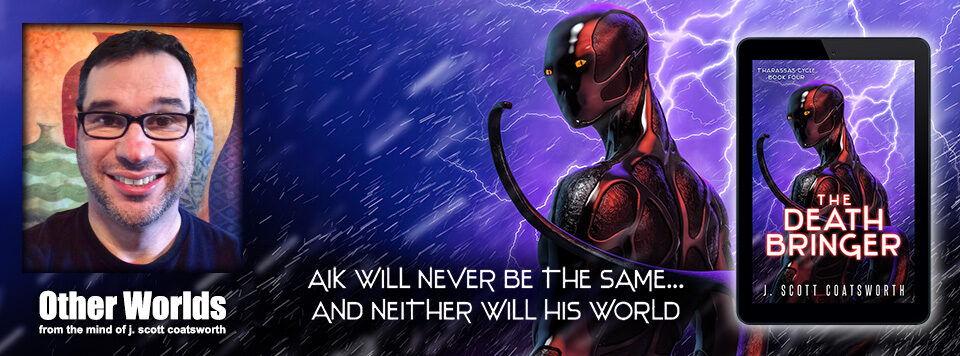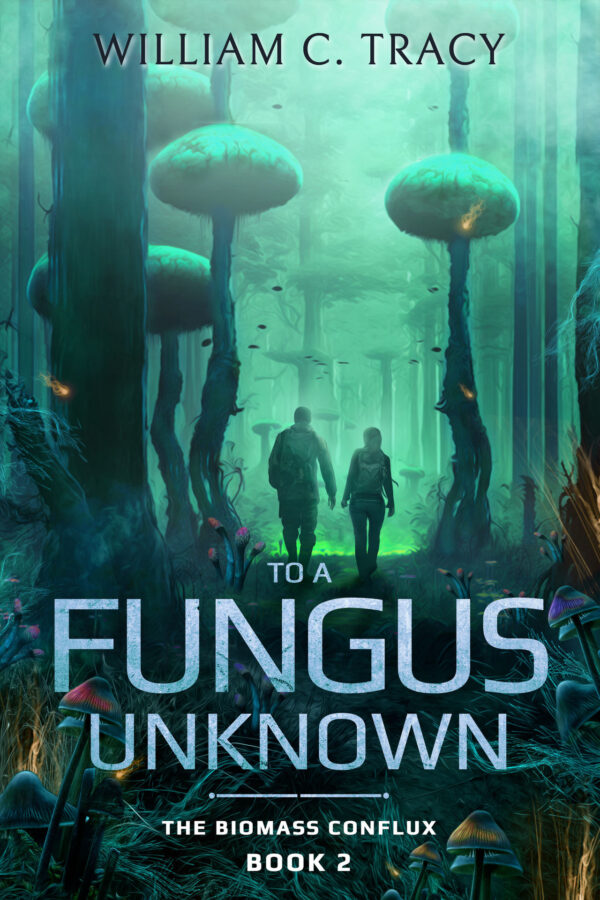Genre: Sci-Fi, Colonization, Alien Contact
LGBTQ+ Category: Various
Get It On Amazon
About The Book
Forty years after landing on Lida, the colony still isn’t finished.
Agetha has survived many more battles than she anticipated when she first landed on her new home planet. She’s older and wiser, has gained family and lost loved ones. And yet her reward for four decades of service is to be pushed to the colony’s outer edges with the other aging Generationals.
But that was only the beginning of her adventure.
The biomass has spent years studying the intruders who landed on its surface, carving a new home from its very essence. Never satisfied in its attempt to communicate with this new and invasive species, finally it has found a way to express its intentions. The colonists may never be the same.
Discover the fate of the colony in the second book of The Biomass Conflux trilogy!
The Review
I just finished book two of William C. Tracy’s The Biomass Conflux after practically begging for a copy pre-release. This series is totally my jam – colonization sci-fi, a weird alien species, and a whiff of mystery. And there’s a map!
The book picks up pretty much where the last one – Of Mycelium and Men – left off. The human colony is now well established on Lida, a world entirely overrun by fungus – what the colonists call the biomass.
Over the last forty years, they’ve managed to build the beginnings of a new civilization, all the while fending off incursions of the omnipresent biomass outside the city walls. Because Lida is metal-poor, the colonists figure out a way to make the ever-mutating biomass inert, and use it as a building material. What was that Ian Malcom said in Jurassic Park? “Life will find a way.”
The colonists are still steadfastly refusing to believe that the biomass could be sentient, despite ever increasing signs that it must be. And the biomass, for its part, doesn’t know whether to study or subsume these new visitors.
Complicating things are the intra-human dynamics at play. The colony is run by the Admins, genetically modified humans who can live for hundreds of years. Their enforcers are the vagals, who have almost superhuman abilities, again due to genetic engineering. Then there are the generationals, who ran the ships on the long journey to Lida, and finally the grounders, who make up the bulk of the natives born on Lida after landing.
Book two starts in a lull, with life having settled down to a pretty normal baseline, as the biomass has left the colony alone for a number of years. Frank, Agatha, admin Jane, and a few others return from book one, along with some new faces, as a fresh challenge arises that may change everything. Maybe there’s a way for the humans to live safely with the biomass, instead of fighting to destroy it.
I love the casual diversity here. There are lesbians, gay couples, non-binary folks, poly relationships, and much more, and it’s all just a matter-of-fact part of the world. Tracy weaves them together skillfully, so skillfully that you kind of forget that the diversity is there, which I suppose is the point.
The story itself takes a few twists and turns, and it’s not always easy to tell who’s the hero and who’s the villain – which makes sense, because we’re dealing with an alien intelligence here that’s so different from humankind that applying human morals is pointless. A better analogy might be an artificial intelligence set to study human culture. It gets a lot right, but also a lot wrong as its own biases and assumptions come into play.
In the end, we get a few great reveals, and also the set-up for the next book in the series. Battle lines are being drawn, and they’re not all between humans and the biomass.
I can’t wait to see where this goes. if you love serious sci-fi, grab this one right now (and the first book if you haven’t read it yet). You won’t be sorry.
The Reviewer
Scott is the founder of Queer Sci Fi, and a fantasy and sci fi writer in his own right, with more than 30 published short stories, novellas and novels to his credit, including two trilogies.

